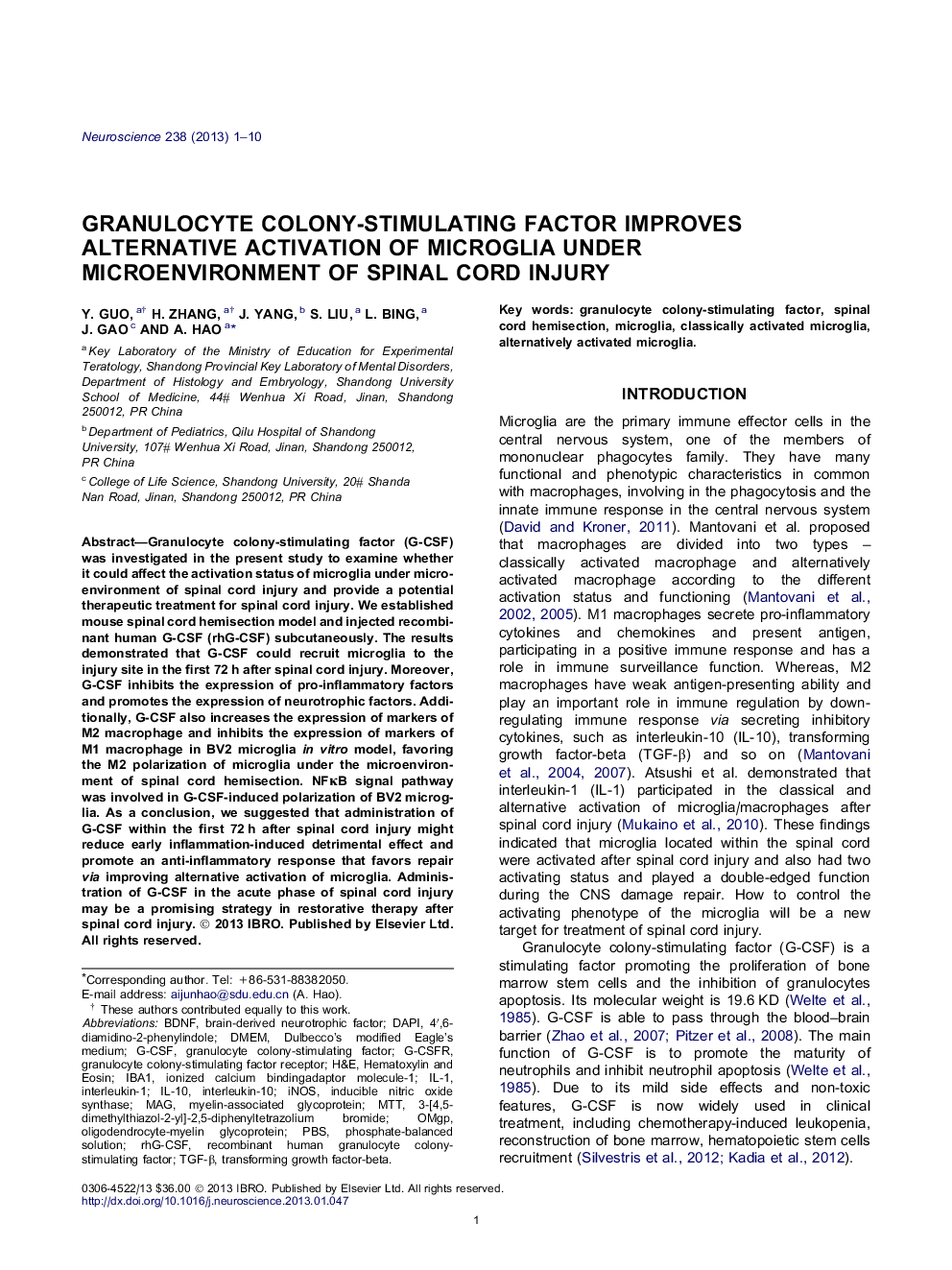| Article ID | Journal | Published Year | Pages | File Type |
|---|---|---|---|---|
| 6274968 | Neuroscience | 2013 | 10 Pages |
Granulocyte colony-stimulating factor (G-CSF) was investigated in the present study to examine whether it could affect the activation status of microglia under microenvironment of spinal cord injury and provide a potential therapeutic treatment for spinal cord injury. We established mouse spinal cord hemisection model and injected recombinant human G-CSF (rhG-CSF) subcutaneously. The results demonstrated that G-CSF could recruit microglia to the injury site in the first 72 h after spinal cord injury. Moreover, G-CSF inhibits the expression of pro-inflammatory factors and promotes the expression of neurotrophic factors. Additionally, G-CSF also increases the expression of markers of M2 macrophage and inhibits the expression of markers of M1 macrophage in BV2 microglia in vitro model, favoring the M2 polarization of microglia under the microenvironment of spinal cord hemisection. NFκB signal pathway was involved in G-CSF-induced polarization of BV2 microglia. As a conclusion, we suggested that administration of G-CSF within the first 72 h after spinal cord injury might reduce early inflammation-induced detrimental effect and promote an anti-inflammatory response that favors repair via improving alternative activation of microglia. Administration of G-CSF in the acute phase of spinal cord injury may be a promising strategy in restorative therapy after spinal cord injury.
⺠G-CSFR was expressed on microglia which was co-labeled with microglia marker CD11b. ⺠IBA1+ cells in contralateral side were significantly less than that in injured side. ⺠M2 macrophage markers increased and M1 macrophage markers decreased after G-CSF. ⺠NFκB increased in BV2 after treatment with injured spinal cord supernatant.
